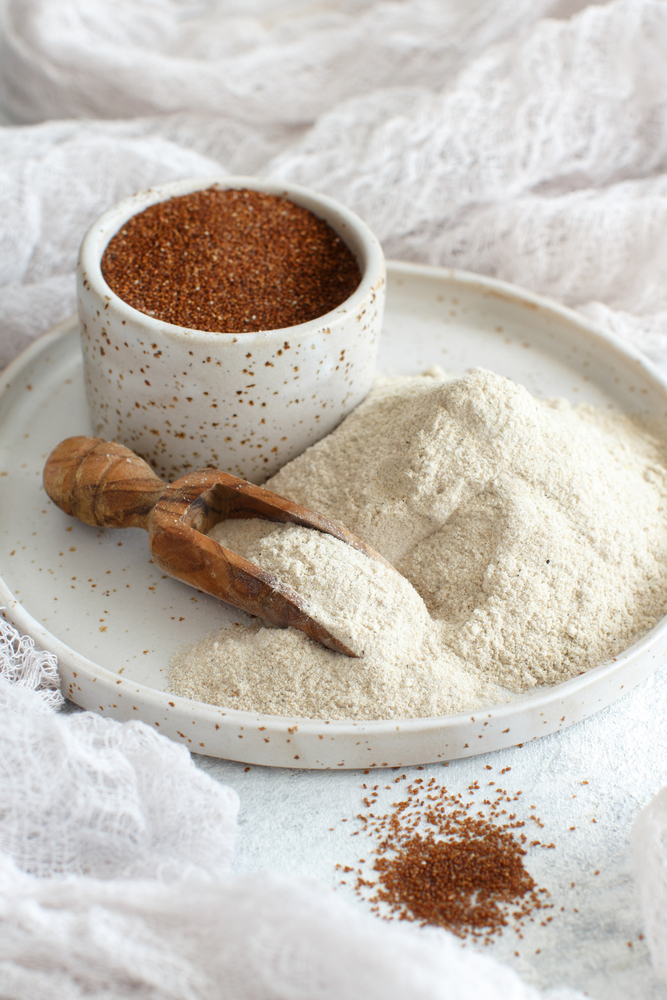- Home
- Blog
- Carbs, Sugars and Fibres
- Grains you may not know about - teff
Grains you may not know about - teff
Written by Catherine Saxelby
on Wednesday, 18 August 2021.
Tagged: ancient grains, grains, health, healthy eating, healthy lifestyle, nutrition, teff, whole grain

Teff (Eragrostis tef ) is one of the so-called “Ancient Grains” which I have talked about on the Foodwatch website before. It’s small, around the size of poppy seed, and comes in white, red and dark brown. Originally from Ethiopia and Eritrea, where it is their staple grain and is used, ground into flour, to make injera – the spongy, fermented flat-bread.
Teff in Australia
The first Australian commercially grown teff was grown in 2014, on the McNaul family farm, near Wakool in the southern Riverina of NSW. You can purchase both the white and brown grains and their flours, as well as products made from these.
The benefits of teff
Teff compares extremely favourably with other grains. According to the Grains & Legumes Nutrition Council (GLNC), teff is:
- Gluten free
- Contains high levels of calcium, phosphorus, iron, copper, aluminium, barium and thiamine
- Good source of essential fatty acids
- Good source of phytochemicals such as polyphenols and phytates
- High in resistant starch, which feed beneficial bacteria in the microbiome
Nutrition per serve
¼ cup (45 grams) uncooked teff (equivalent to a bit less than one cup cooked) supplies 190 kilojoules (45 Calories), 6 g protein, less than 1 gram fat (including virtually no saturated fat), 33 g carbohydrate (including less than 1 gram of sugars), 4 g fibre and 5 mg sodium.
The drawbacks of teff
There aren’t really any now that it is grown in Australia. Locally grown means lower air miles. The price is a slight drawback as you’ll pay around $22.50 per kg for the grain and $25.00 per kilo for the flour.

Teff and GI
The cooked whole grain has a Glycemic Index (GI) of around 57 (moderate) and most likely due to its high fibre content. However, according to Healthline, bread made with teff is a different story, with the GI of traditional injera ranging from 79–99 and that of teff porridge from 94–137. These are both high GI foods. However, bread made with teff flour has a lower GI than bread made from other grains such as wheat, quinoa, or buckwheat. With a GI of around 74 it is similar to that of oat or sorghum bread.
The bottom line
If you are a coeliac or have a gluten allergy, sensitivity or intolerance then teff may be the grain for you. It has a host of nutrition goodies though the jury is out on the bioavailability of some of these. If you have Type 2 diabetes, be careful how you use it, and which teff products you consume, as the GI can vary widely.
Foodwatch
The Good Stuff
The Boring Stuff
© 2025 Foodwatch Australia. All rights reserved
Website by Joomstore eCommerce






